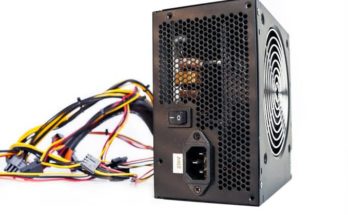A Monitor is a electronic output device that displays the Video and Graphics information
generated by a connected computer through the computer’s video card. A traditional monitor is only used to display (output) information from a computer and provides no source of input. For this reason, a computer monitor is considered an output device. The first computer monitor was introduced on 1 March 1973, which was part of the Xerox Alto computer system. A monitor is also known as a screen or a visual display unit (VDU).
There are many ways to classify monitors. The most basic is in terms of color capabilities,
which separates monitors into three classes:-
Monochrome :- Monochrome monitors actually Monochrome monitors actually display two colors, one for the background and one for the foreground. The colors can be black and white, green and black, or amber and black.
Gray-Scale :- A gray-scale monitor is a special type of monochrome monitor capable of displaying different shades of gray.
Color :- Color monitors can display anywhere from 16 to over 1 million different colors. Color monitors are sometimes called RGB monitors because they accept three separate signals — red, green, and blue.
FUNCTIONS OF MONITOR
The main function of the monitor is to allow users to interact with the computer in the form of text, graphics, display images, and video. There are various main functions related to a monitor. These functions are, of course, related to video or other visual display also. Some of such functions are :-
SCREEN SIZE
The most important aspect of a monitor is its screen size. screen sizes are measured in diagonal inches, the distance from one corner to the opposite corner diagonally. A typical size for small VGA monitor’s is 14 inches. Monitors that are 16 or more inches diagonally are often called full page monitors.
PIXELS AND RESOLUTION
The Resolution of a monitor indicates how densely packed the pixels are. In general, the more pixels (often expressed in Dots per inch), the sharper the image. Most modern monitors can display 1024 by 768 pixels, the SVGA Standard. Some high-end models can display 1280 by 1024, or even 1600 by 1200.
FREQUENCY
A few monitors are fixed frequency, which means that they accept input at only one frequency. Most monitors are multiscaning, which means that they automatically adjust themselves to the frequency of the signals being sent to it. This means that they can display images at different resolutions, depending on the data being sent to them by the video adapters.
FRAMES
Frames is a screen that contains complete information on the monitor screen is known as a frame. For a continues picture the frame rate should be more necessary. Higher will be the frame rate, laser will be the problem of flickering.
ASPECT RATIO
This is the relation of the vertical length to the horizontal length of the monitor
DOT PITCH
This is the distance between each pixel in every square inch that’s displayed. The shorter the distance, the sharper and clearer the images are.
BANDWIDTH
The range of signal frequencies the monitor can handle. This determines how much data it can process and therefore how fast it can refresh at higher resolutions.
TYPES OF MONITOR
A variety of technologies have been used to produce various types of displays. There are different types of monitors as given below;
1. Cathode Ray Tube (CRT) MONITOR:- Cathode Ray Tube (CRT) are an old technology for monitors. This type of monitor is known for bulky and heavy. It uses a beam of electrons to create an image on the screen. It is basically a vaccum tube having one or more electron guns that fire a beam of electrons inside the screen. The electron beams repeatedly hit the surface of the screen. These guns are responsible for generating RGB (Red, Green, Blue) colors, and more other colors can be generated with the help of combining these three colors. It also consumes a lot of electricity.
2. Flat Panel Monitors :- These type of monitors are light weight and take less space. They consume less power as compared to CRT monitors. These monitors are more effective as they do not provide harmfull radiation. These monitors are more expensive than CRTs. The flat panel monitors are used in PDA, Notebook computers, and Celluar phones.
This type of monitor screens use two types of technologies, are given below
Liquid Crystal Display (LCD) :- LCD screen contains a substance known as liquid crystal. Liquid crystal display monitors consume very little electricity as compared to CRT monitors. It occupies less space and is lighter in weight. It offers a clear picture as compared to CRT display and emits less radiation.



